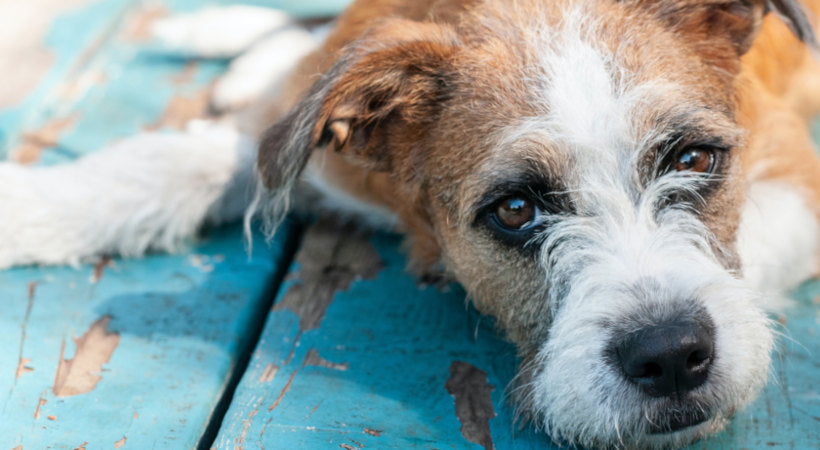Sit Down Dog Wheelchairs

Brachial Plexus Injuries and How They Impact a Dog's Mobility
Brachial Plexus Avulsion occurs following traumatic events such as a car accident or a fall from a significant height. During the trauma, the dog can damage the nerve tissues, thoracic nerves, and cervical nerves within the brachial plexus near the armpit. The most severe cases occur when the nerves tear away from their attachment to the spinal cord. These nerves control a dog’s front limbs, and the leg becomes paralyzed when torn.
Symptoms of Brachial Plexus Avulsion
It takes a significant impact to injure a dog’s brachial plexus. These injuries only occur following a serious accident. A Veterinarian should always see your dog after suffering a trauma.
Noticeable Changes in the Front Leg
The symptoms of a brachial plexus injury are noticeable, and you will see a significant change in how your dog moves. Your dog will drag their front leg, and there will be noticeable signs of paralysis in the leg. Common signs include:
- Front leg weakness
- Inability to bear weight on the front leg
- Partial or complete front limb paralysis
- Loss of sensation below the elbow
- Dragging paw usually impacts one front limb
This injury can impact a dog’s pain signals from traveling to its brain. So don’t be fooled just because your pet doesn’t look like they’re in pain. Your pet has experienced significant trauma and needs to be seen by a veterinarian immediately.
Droopy Eyes
The brachial plexus nerves affect a dog’s eye as well as its leg. 50% of brachial plexus injuries cause Horner’s Syndrome, which causes the dog’s pupil to stay very small and causes the third eyelid to droop. Horner’s Syndrome does not cause total blindness, the eye will look odd, but your dog can still see.
Treating a Canine Brachial Plexus Injury
A pet’s recovery depends on the severity of the injury and nerve damage. Recovery is slow, and your dog will not heal overnight. For example, a dog’s recovery from a brachial plexus injury will likely take weeks to months. If there is no improvement after six weeks, it is unlikely to regain the use of the affected limb.
Physical Therapy
Exercise is an integral part of a pet’s recovery. Physical therapy helps prevent muscle atrophy, strengthen the injured leg, and help your dog to bear weight on its front leg safely. Work with your veterinarian to determine when the time is right for your dog to begin therapy.
There is no cure for Brachial Plexus injuries, although combining physical therapy exercise with hydrotherapy and laser therapy can be beneficial.
Supporting the Leg

A leg brace can be beneficial during a dog’s recovery. Bracing the front limb can provide many benefits as a dog heals from its brachial plexus injury:
- Support the carpal joint to keep the leg in position
- Prevent the carpal joint from dropping
- Protect the leg from chewing
- Prevent further damage and abrasions caused by dragging
A custom orthotic brace is often recommended for dogs that need target leg support to fit them perfectly. Bracing can be customized to suit the pet’s specific diagnosis, whether adding articulated joints to improve range of motion or changing the height of the brace for additional joint support. Many options are available, and an orthotist can craft a dog brace to support the wrist, carpal, elbow, or multiple joints simultaneously.
Surgery and Amputation
Not every dog will regain use of its front limb after a brachial plexus injury. Nerve damage can cause some pets to lick or chew their injured leg, leading to irritation and further injury. In addition, dogs with no signs of recovery after six months may require limb amputation to lower the risk of infection in the leg. However, amputation is typically the last resort.








